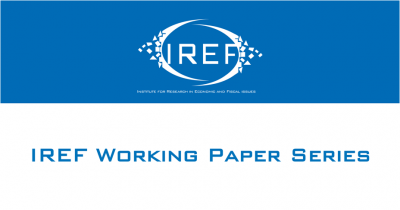In a new IREF Working Paper Stefano Adamo of the University of Banja Luka turns to a young genre of Italian literature. Adamo analyzes four novels that revolve around the financial crises of the year 2008 and the government debt crises of the 2010s. What is special is that the authors of the novels can look back at a career in finance. As insiders they can illustrate processes within banks and on financial markets in Italy from first hand experience. In the working paper, Adamo unpacks in detail how the authors depict the financial industry. The industry as well as its protagonists do not fare well. According to the authors, the world of finance is populated by irrational, overly risk-loving individuals. Many of them are questionably entangled with politics. In a sentence, all the novels contain a strong plea for more regulation.
Booming: Literary accounts of financial crises
Adamo points out that literary and cinematic works that showcase the world of finance are popular in Italy since the turbulences on financial markets in the 2000s. This interest also shows up in numerous prizes for literary works with a focus on finance. However, this development does not imply that the public nowadays understands financial market phenomena better.
To complement the perspectives that the four authors present in their novels Adamo conducted interviews with the authors and talked to three of them.
Four novels: Similarities and differences
The four narrations aim at making the seemingly mysterious world of finance more comprehensive. At the same time, they criticize the presence of distorted incentive systems and the close links with the world of politics.
In particular, Adamo argues that Guido Maria Brera considers the decoupling of finance from the real economy as particularly problematic, while he portrays the mostly male protagonists in finance as cold and calculating. In contrast, Letizia Pezzali describes professionals in finance as humans whose behavior is dominated by irrationalities. In interviews with Adamo, both authors stress the destabilizing role of low interest rates and the accompanying high degree of leverage that financial enterprises take on.
The books by Eugenios Tornaghi and Fabio Innocenzi both put the undesirable connection between banks and government entities center stage. Thereby, the explorations by Innocenzi offer more detailed insights into the everyday business of modern Italian bankers.
Financial novels: Shaping public opinion
How financial markets, the organizations engaged in them, and their employees are perceived by the public is not only affected by politics, science, and the media. Literary and cinematic narrations also shape the public’s perception of the world of finance. The works analyzed by Adamo are potentially especially influential, because the relevant professional experience of the authors may add to the perceived authenticity of their contributions. As Adamo hints in his Working Paper, the literary narratives will hopefully not lead to an overestimation of the understanding of the processes surrounding the financial industry on the part of the readers.



